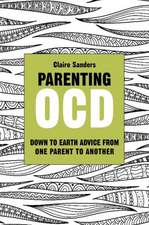Geographies of Alternative Education: Diverse Learning Spaces for Children and Young People
Autor Peter Kraftlen Limba Engleză Paperback – 11 noi 2014
One of the first book-length explorations of alternative learning spaces outside mainstream education, Geographies of Alternative Education offers a comparative analysis of alternative education in the UK, focusing on learning spaces that cater to children and young people. Using original research conducted at over fifty learning spaces, it demonstrates the importance of a geographical lens for understanding alternative education. In doing so, it develops new theories on autonomy, emotion and affect, intergenerational relations, and a number of other topics.
| Toate formatele și edițiile | Preț | Express |
|---|---|---|
| Paperback (1) | 383.58 lei 43-57 zile | |
| Bristol University Press – 11 noi 2014 | 383.58 lei 43-57 zile | |
| Hardback (1) | 832.69 lei 43-57 zile | |
| Bristol University Press – 7 mai 2013 | 832.69 lei 43-57 zile |
Preț: 383.58 lei
Nou
Puncte Express: 575
Preț estimativ în valută:
73.40€ • 76.83$ • 61.09£
73.40€ • 76.83$ • 61.09£
Carte tipărită la comandă
Livrare economică 31 martie-14 aprilie
Preluare comenzi: 021 569.72.76
Specificații
ISBN-13: 9781447300502
ISBN-10: 1447300505
Pagini: 272
Ilustrații: 15 figures, 1 table
Dimensiuni: 152 x 229 x 18 mm
Greutate: 0.5 kg
Editura: Bristol University Press
Colecția Policy Press
ISBN-10: 1447300505
Pagini: 272
Ilustrații: 15 figures, 1 table
Dimensiuni: 152 x 229 x 18 mm
Greutate: 0.5 kg
Editura: Bristol University Press
Colecția Policy Press
Notă biografică
Peter Kraftl is a reader in human geography at the University of Leicester, UK. He is coeditor of Critical Geographies of Childhood and Youth and the journal Children's Geographies.
Cuprins
List of figures
Notes on author
Acknowledgements
1. Introduction
2. Conceptual frameworks: towards geographies of alternative education
3. Alternative learning spaces in the UK: background to the case studies used in this book
4. Connection/disconnection: positioning alternative learning spaces
5. Mess/order: materials, timings, feelings
6. Movement/embodiment: learning habits (I)
7. Inter/personal relations: scale, love and learning habits (II)
8. Towards the ‘good life’: alternative visions of learning, love and life-itself
9. Conclusion: geographies of alternative education and the value of autonomous learning spaces
References
Index
Notes on author
Acknowledgements
1. Introduction
2. Conceptual frameworks: towards geographies of alternative education
3. Alternative learning spaces in the UK: background to the case studies used in this book
4. Connection/disconnection: positioning alternative learning spaces
5. Mess/order: materials, timings, feelings
6. Movement/embodiment: learning habits (I)
7. Inter/personal relations: scale, love and learning habits (II)
8. Towards the ‘good life’: alternative visions of learning, love and life-itself
9. Conclusion: geographies of alternative education and the value of autonomous learning spaces
References
Index
Recenzii
“Organised thematically, the book conveys a feeling of careful distillation. . . . a complex path that carefully lays out a rhizomatic integration of the social and spatial. . . . the book has a broad range, useful as a way of scoping the field.”
“The book’s appeal is its recognition of diverse economic and autonomous practices, non-representational geographies, and the politics of life-itself, which, combined, dismantle any sense of a simple binary between ‘alternative’ and ‘mainstream’ education.”
“Scholars, educators, and policy makers will find this to be a valuable resource given that it is a hopeful theoretical and political project around education and learning.”
"An outstanding critical analysis of youth policy that puts geography centre-stage. Drawing on diverse case studies, the book interweaves theory and practice—listening to and informing practitioner, academic and young people's perspectives."
"Kraftl and his colleagues bring together a fine collection of essays that highlight the importance of scales, spaces, places and networks to the ways in which policies about young people are created and put into practice. At its core, this book is about the relevance of studying children's geographies. It adds an important policy dimension to the growing literature on children's geographies, arguing that discourses on policy are almost always spatialized. One of the most exciting aspects of this book comes from a focus in some chapters on how policy can take place through the agency of young people. "
"How a nation treats its youth determines how those young people will treat their nation. This skilfully edited text critically and theoretically interrogates the complex spatialities of youth and education policies; invaluable reading for those working with, and caring for, children and young people."













